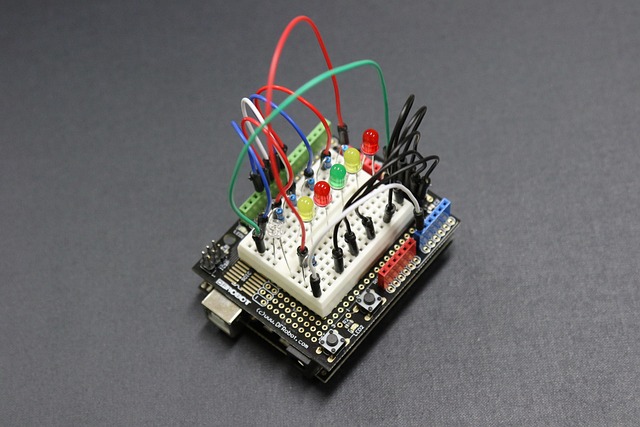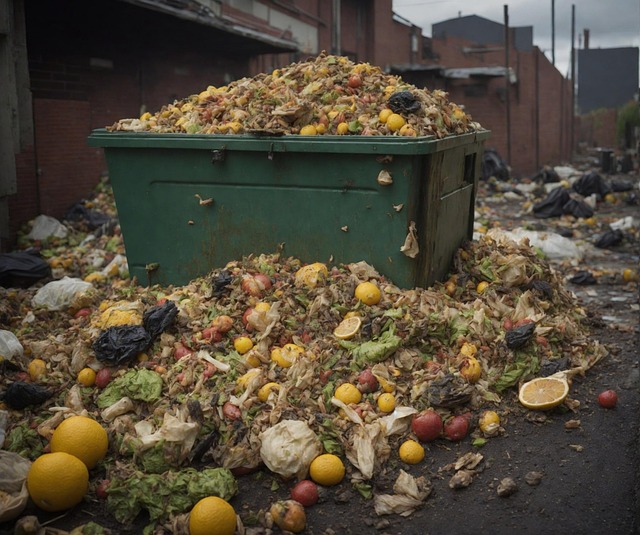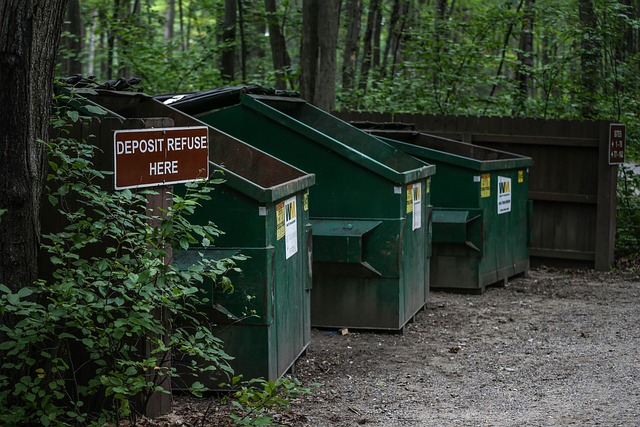Secure Albany Electronics Recycling: Protecting Data with Every Step

Albany Electronics Recycling provides a comprehensive e-waste management program, offering secure data destruction, convenient drop-off options, and a…….
In an era where technology advances at an unprecedented pace, the sustainable management of electronic waste (e-waste) has become a critical global challenge. Among various initiatives aimed at tackling this issue, Albany Electronics Recycling stands out as a pioneering effort, offering a comprehensive solution to responsibly recycle and repurpose electronic devices. This article delves into the intricacies of Albany’s approach, exploring its impact, benefits, and potential for shaping a more sustainable future. By examining its historical foundations, global implications, economic drivers, technological innovations, and policy frameworks, we gain valuable insights into how effective e-waste recycling programs can drive positive change on multiple levels.
Definition: Albany Electronics Recycling (AER) is a comprehensive program designed to collect, sort, recycle, and responsibly dispose of electronic devices, ensuring minimal environmental impact and maximizing resource recovery. It involves the deconstruction and processing of e-waste, including computers, smartphones, televisions, and various consumer electronics, to extract valuable materials such as metals, plastics, glass, and rare earth elements.
Core Components:
Collection and Drop-off Points: AER establishes convenient locations for residents and businesses to drop off their unwanted electronics. These can include municipal recycling centers, retail stores, and dedicated collection events.
Sorting and Processing: The collected e-waste is meticulously sorted based on material type and device category. Advanced sorting technologies, such as optical sensors and robotic arms, play a crucial role in this stage.
Material Recovery: Different materials are then processed separately. Metals are shredded and separated using magnetic and eddy current separators, while plastics and glass undergo shredding, washing, and further separation to ensure purity.
Re-refining and Repurposing: Recovered materials are sent to specialized facilities for re-refining, where they are transformed into raw materials for manufacturing new products. This step promotes a circular economy by reducing the need for virgin resources.
Historical Context: The concept of Albany Electronics Recycling emerged in response to growing environmental concerns regarding e-waste management. Over time, the program has evolved, incorporating advanced technologies and expanding its reach to include more device types. Key milestones include:
Albany Electronics Recycling has had a profound impact on both local communities and the global e-waste management landscape:
| Impact Area | Description |
|---|---|
| Environmental Conservation | AER diverts millions of pounds of e-waste from landfills each year, preventing the release of toxic substances into soil and groundwater. |
| Resource Recovery | The program recovers valuable materials, reducing the demand for mining and processing virgin resources. For instance, gold, silver, and rare earth elements can be reclaimed, contributing to a more sustainable supply chain. |
| Job Creation | Albany’s e-recycling efforts have spurred local job growth in collection, sorting, and material handling, offering employment opportunities in underserved communities. |
| Global Inspiration | The city’s successful model has inspired other municipalities worldwide to adopt similar initiatives, fostering a global movement towards responsible e-waste management. |
Regional Trends:
The economic aspects of Albany Electronics Recycling are multifaceted, influencing both the local and global economies:
Market Dynamics: The growing awareness of environmental sustainability has created a thriving market for recycled materials. Manufacturers across various industries, from automotive to electronics, are increasingly demanding recycled content to meet environmental regulations and consumer preferences.
Investment Patterns: Private equity firms and venture capitalists have shown interest in e-recycling startups, recognizing the potential for profitable ventures. Successful programs like AER attract investments, fostering infrastructure development and technological advancements.
Economic Impact on Albany: The program contributes to Albany’s local economy by creating employment opportunities, generating tax revenue, and stimulating related industries such as logistics, material handling, and environmental consulting.
Technological innovations play a pivotal role in the success of Albany Electronics Recycling:
Automated Sorting Systems: Robotic arms equipped with advanced sensors can accurately sort various device components, increasing sorting efficiency and reducing human error.
Material Recovery Technologies: Hydrometallurgy and pyrometalurgy are emerging techniques for extracting high-purity metals from e-waste. These methods offer more efficient recovery processes, further enhancing the program’s environmental benefits.
Internet of Things (IoT) Integration: IoT sensors can be embedded in recycling bins to monitor fill levels and optimize collection routes, improving logistics and overall efficiency.
Digital Tracking Platforms: Blockchain technology enables transparent tracking of e-waste throughout the recycling process, ensuring accountability and facilitating the creation of digital certificates of recycling.
Governing Albany Electronics Recycling are various policies, regulations, and legislative frameworks that shape its development and impact:
Local Ordinances: Albany’s city council has enacted specific laws mandating e-waste collection programs and setting recycling targets for electronics manufacturers.
State Laws: New York State’s electronic waste management regulations provide a framework for proper disposal and recycling, with strict penalties for non-compliance.
Federal Initiatives: The U.S. Environmental Protection Agency (EPA) offers guidance and promotes partnerships to encourage responsible e-waste management practices nationwide.
International Agreements: Global agreements like the Basel Convention regulate the transboundary movement of hazardous waste, including e-waste, ensuring that electronic devices are recycled responsibly across borders.
Despite its many achievements, Albany Electronics Recycling faces certain challenges and criticisms:
Collection Coverage: Ensuring convenient access to collection points for all residents remains a challenge in densely populated urban areas. Expanding collection services to suburban and rural communities is an ongoing effort.
Contamination: Improperly disposed e-waste can contaminate recycling streams, affecting the quality of recovered materials. Public education and awareness campaigns are crucial to address this issue.
Market Fluctuations: The market value of recycled materials can fluctuate, impacting the financial viability of recycling programs. Diversifying revenue streams and exploring long-term partnerships can mitigate these risks.
Criticism from Critics: Some environmental advocates argue that e-recycling programs should focus on preventing e-waste generation through extended producer responsibility (EPR) policies, rather than solely relying on collection and recycling. Balancing these perspectives is essential for comprehensive waste management strategies.
Several case studies highlight the successful application of Albany Electronics Recycling principles in different contexts:
Case Study 1: GreenTech City Initiative
In a major European city, the local government collaborated with private sector partners to implement an integrated e-recycling program as part of a larger sustainability initiative. The program featured:
Outcomes: The city achieved a 65% recycling rate for electronic devices within two years, significantly reducing its e-waste footprint.
Case Study 2: Rural Community Partnership
A small town in the U.S. Midwest partnered with an e-recycling company to address the challenges of limited resources and low population density. The strategy included:
Results: The program successfully collected over 10 tons of e-waste in its first year, surpassing initial expectations and setting a benchmark for similar initiatives.
Looking ahead, Albany Electronics Recycling has several promising growth areas and emerging trends:
Circular Economy Integration: AER can further strengthen its position within the circular economy by fostering partnerships with manufacturers to design products for enhanced recyclability and resource recovery.
Smart City Technologies: Integrating e-recycling programs with smart city initiatives allows for real-time monitoring, optimized logistics, and data-driven decision-making.
International Expansion: With successful models proven, the program can be replicated in other cities worldwide, especially in regions with growing e-waste generation.
New Material Recovery Techniques: Ongoing research into advanced recycling technologies will enable more efficient recovery of rare earth elements and other valuable materials.
Albany Electronics Recycling represents a significant milestone in the global effort to address electronic waste management challenges. Through its comprehensive approach, innovative technologies, and strategic partnerships, the program has set an example for sustainable e-waste recycling. As the world navigates the complexities of the digital age, initiatives like AER are essential in ensuring that technology advances hand-in-hand with environmental stewardship.
By understanding the historical context, global impact, economic drivers, technological advancements, and policy frameworks surrounding Albany Electronics Recycling, we can appreciate its role in shaping a more sustainable future. As the program continues to evolve, its influence will undoubtedly extend beyond Albany’s borders, contributing to a global culture of responsible e-waste management.
Q: How does AER ensure that my old electronics are recycled safely?
A: AER follows strict environmental regulations and employs advanced sorting technologies to minimize potential hazards associated with e-waste. All materials are processed in facilities designed to handle hazardous substances safely.
Q: Are there any fees involved in recycling electronics through AER?
A: No, the service is free for residents. Businesses may have different arrangements, but individuals do not incur costs for dropping off their electronics at designated collection points.
Q: What types of electronic devices can be recycled through AER?
A: AER accepts a wide range of devices, including computers, laptops, tablets, smartphones, e-readers, televisions, gaming consoles, and small home appliances.
Q: Can I drop off large items like old refrigerators or air conditioners?
A: While AER primarily focuses on smaller electronics, some facilities may accommodate larger items as part of special collection events. Check the program’s official website or local announcements for details on such events.
Q: How does AER benefit the environment?
A: By diverting e-waste from landfills, AER helps prevent the release of toxic substances into soil and water. Additionally, it promotes resource recovery, reducing the demand for mining virgin resources and minimizing environmental degradation.

Albany Electronics Recycling provides a comprehensive e-waste management program, offering secure data destruction, convenient drop-off options, and a…….

Albany, New York, promotes responsible electronics recycling through meticulous processes and state-compliant methods by Albany Electronics Recycling…….

Albany Electronics Recycling provides efficient, eco-conscious computer recycling services for businesses of all sizes, minimizing environmental impac…….

Albany promotes sustainable tech disposal through strategically placed e-waste collection points, accepting various electronic devices for responsible…….

Albany faces an e-waste crisis due to rapid tech progress and diverse populations, with overflowing landfills from obsolete electronics posing environ…….

Albany's Green Tech Disposal Initiative promotes responsible e-waste recycling through specialized facilities and collection events, preventing e…….

Albany Electronics Recycling (AER) tackles global e-waste concerns by providing convenient and accessible recycling services for individuals and busin…….

Albany Electronics Recycling hosts regular tech recycling events to promote sustainable practices and reduce e-waste. Local residents, businesses, and…….

Albany Electronics Recycling is a leading expert in sustainable e-waste management, transforming scrap into resources through responsible collection a…….

Albany, NY, addresses the pressing issue of electronic waste through innovative e-waste collection events organized in collaboration with local expert…….